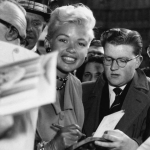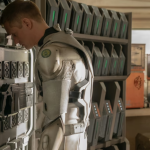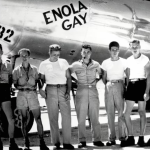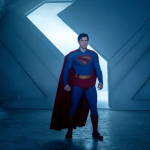Back in the late 2000s, I was instructing a nuclear weapons course for college students who had largely grown up since the collapse of the Soviet Union. One student raised his hand and asked, “What were you so afraid of?” as I attempted to describe what it was like to grow up worrying about an impending apocalypse.
Yes, nuclear weapons are terrible, but he gave up at this point, shaking his head in confusion as though to ask, “What’s the big deal?” I took a moment to consider a more effective way to convey why the world’s destruction was so significant. This fear was internalized as children by those like me who grew up during the Cold War.
Our campfire stories about hiding beneath school desks when air-raid sirens sounded are still told. For my 21st-century students, such things seemed enigmatic and even unimportant. Then it hit me: they haven’t watched the films.
Americans were exposed to images of (and a vocabulary for) nuclear war through popular culture during the Cold War. Even the most fanciful entertainment, such as comic books, James Bond films, and music videos, featured images of mushroom clouds, DEFCON alerts, exploding buildings, and fallout-shelter signs.
Because it had been repeatedly shown to us on screens of all sizes, we were able to visualize the possibility of a nuclear holocaust lurking in the background, like the figure of Death hiding among revelers in a Bosch triptych.
Future generations have grown up with their own fears: nuclear war may seem more like a historical curiosity than a real threat, and terrorism, climate change, and now artificial intelligence are upending life on a global scale.
However, both Russia and the United States currently have about 1,500 strategic warheads in use, many of which are on alert, and thousands more in stock. Although the current global arsenal is more than enough to destroy hundreds of cities and kill billions of people, it is still a step up from the chaos of the Cold War, when the superpowers were sitting on tens of thousands of deployed weapons.
Although the threat still exists, the public’s anxieties and the films that examined them have diminished. Cold War-era films are more than just artifacts; Americans need new films to remind the next generation. The atrocities they portray are still conceivable.
From the August 2025 issue: Regarding the president’s weapon, Tom Nichols
Filmmakers were capitalizing on public fears of a nuclear arms race less than ten years after the Trinity test and the atomic bombings of Japan. The Day the Earth Stood Still, a 1951 classic, ends with a dashing alien named Klaatu informing Earthlings that other civilizations in the galaxy have determined humans cannot be trusted with the power of the atom.
He explains that these civilizations long ago decided to hand over their military might to invincible robots that were designed to mercilessly destroy aggressors. Klaatu asserts that Earth must accept this arrangement or perish. After saying courteously, “We shall be waiting for your answer,” he departs in his spaceship, leaving the stunned Earthlings gazing up at the sky.
Moviegoers who had recently survived World War II were the target of this somber call to action. Monster movies and popcorn flicks, which would later be broadcast on television on a regular basis, would expose their children, the Baby Boomers, to nuclear fears for the first time.
In the 1954 horror film Them!, a nest of ants is irradiated by nuclear explosions in New Mexico, the location of the Trinity test, transforming them into giants that devour humans. Them! implied that nature had let loose radioactive monsters as a form of retaliation against humanity for experimenting with nuclear fire.
A government scientist cautions that we might be seeing a biblical prophecy come to pass. This formula was used in other thrillers, such as the 1954 release of Godzilla, the first king of the monsters, who was roused by nuclear testing.
The power of earlier atomic weapons was dwarfed by the thermonuclear weapons developed by the superpowers by the middle of the 1950s.
The original Godzilla movie, which was made in Japan less than ten years after Hiroshima and Nagasaki, and the 1956 American release, which included a performance by Raymond Burr, are both sombre and, for the time, daring. They showed radiation sickness victims and had a shocking conclusion.
Instead of using his knowledge to create another superweapon, the scientist who devises a method to destroy Godzilla kills himself.
Fail Safe and its black-comedy twin, Dr. Strangelove, introduced audiences to the nightmare of unintentional nuclear war in 1964, two years after the Cuban missile crisis had driven the world to the brink of nuclear abyss. This fear became more prevalent on screen as nuclear weapons—and the means to deliver them—became more complex and varied.
In Fail Safe, the Soviet premier informs the American president (Henry Fonda) that no one is responsible for what is clearly an electronic error just as the U.S. bombers are about to destroy Moscow. Fonda disputes this absolution, saying, “We are both at fault. We allowed our machines to become unmanageable.”
In an attempt to prevent complete Soviet retaliation, Fonda orders the nuclear destruction of New York City as retribution after Moscow is destroyed.
In later years, like many children of the Cold War, I watched these films on television. Once I realized that I was being raised on a target—my family’s home was adjacent to an Air Force nuclear-bomber base, which the Soviets would destroy in the first few minutes of a conflict—they had a particularly strong hold on me.
As a boy, I was so troubled by Fail Safe that I purchased the book while I was in college to see if the book ended as depressingly as the film did. (It does.) I gave the book to my students years later. How did they respond to the conclusion?
“That is not possible for the president!”
I answered, “Are you sure?”
On Star Trek and The Outer Limits, nuclear war frequently appeared on television, sometimes as allegories. Rod Serling, whose groundbreaking program The Twilight Zone occasionally examined the ramifications of living with the bomb, was the one who did more to bring nuclear issues into living rooms.
When neighbors learned that a nuclear attack was imminent, they turned against one another in one episode, “The Shelter.” Another, “Time Enough at Last,” featured a traditional Serling twist: a bookworm joyfully sits down with a stack of books after discovering the world has been destroyed by fire while on a lunch break in his bank’s vault. However, he then unintentionally breaks his only pair of glasses.
Serling was also in charge of the conclusion of Planet of the Apes, which is arguably the biggest gut punch in 1960s cinema.
Following an American astronaut (Charlton Heston) after his ship crashes on a planet where a talking ape civilization rules over mute humans, the script, written by Serling and Michael Wilson, is loosely based on a satirical French novel. Heston breaks free from his captors, travels to a desolate beach, and finds the remains of the Statue of Liberty at the film’s conclusion, which differs from the book’s.
He becomes delirious with rage upon realizing that he is on a nuclear-war-torn Earth. He beats his fists into the surf and yells, “You maniacs! You blew it up! Damn you! Goddamn you all to hell!” After that, the credits roll and the scene fades to black, leaving only the sound of the waves crashing onto the shore.
Many of the young students were as shocked as the audiences had been in 1968 when I showed them these last minutes. Some students acknowledged that the straightforward scene of Heston crying in front of the final remnant of a vanished civilization disturbed and even moved them.
Although it was getting harder to shock audiences in the 1970s, the black comedy A Boy and His Dog (1975) succeeded in doing so and went on to become a cult favorite. In the distant year of 2024, Don Johnson wanders a nuclear wasteland in search of food and sex with a talking telepath. Johnson discovers both.
The girl he believed he loved but who ultimately attempted to betray him is allowed to be eaten by his dog.
A Boy and His Dog forewarned us that civilization is a front and that we could turn into amoral barbarians in just one more conflict.
(Suite dans le message suivant – dépassement de longueur)
 By Guest Author
By Guest Author












